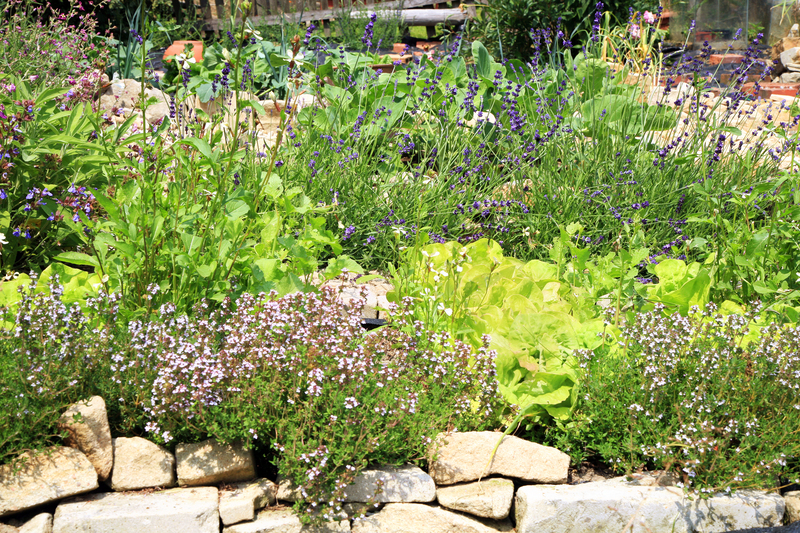The essential orchid care checklist for enthusiasts
Posted on 17/05/2025
The Essential Orchid Care Checklist for Enthusiasts
Orchids are captivating plants that have fascinated gardeners and botanists alike for centuries. With their exotic blooms, intriguing growth habits, and extraordinary diversity, orchids make excellent additions to homes and collections. But their unique needs also cause many to shy away, intimidated by their famed reputation for difficulty. The good news? Today, with the right information and a thorough orchid care checklist, you can nurture these mesmerizing plants with confidence, whether you're a beginner or a seasoned enthusiast.
This comprehensive guide will equip you with all the essential tips and steps you need to successfully care for your orchids, ensure glorious blooms, and keep your collection thriving year-round.

Why Proper Orchid Care Is So Important
Orchids (family Orchidaceae) comprise over 25,000 species, making them one of the largest and most diverse plant families on earth. From the striking Phalaenopsis moth orchid to the tiny jewels of the Masdevallia genus, their adaptations span jungles, mountains, and deserts. What all orchids share, however, are specific needs that differ from traditional houseplants.
Understanding and meeting these unique requirements is crucial to the health and longevity of your orchids. Neglecting just one aspect can lead to common problems such as root rot, leaf drop, pest infestations, or lack of blooms. By following an essential orchid care checklist, you lay the groundwork for vibrant, healthy, and repeat-flowering plants.
The Ultimate Orchid Care Checklist
Let's break down the vital steps and considerations for optimal orchid health. Bookmark this checklist and refer to it regularly for ongoing care success.
1. Choose the Right Orchid for Your Conditions
- Know your environment: Investigate the light, temperature, and humidity levels in your home or growing space before purchasing an orchid.
- Select beginner-friendly species: Some orchids are more forgiving. Phalaenopsis, Cattleya, Dendrobium, and Oncidium species adapt well to indoor conditions and are easier to care for.
- Consider your commitment: While many orchids only require basic care, some rare or exotic types may need more attention or supplemental equipment, such as humidity trays or grow lights.
2. Understand Orchid Lighting Needs
- Bright, indirect light: Most common orchids prefer plenty of indirect sunlight, such as an east- or west-facing window with a sheer curtain. Direct midday rays can scorch foliage.
- Monitor for proper exposure: Healthy orchid leaves are typically medium-green. Dark green indicates too little light, while yellowish or red-tinged leaves signal too much.
- Use supplemental lighting: In low-light homes or northern climates, use fluorescent bulbs or dedicated grow lights to provide 12-16 hours of light daily.
3. Master Watering Techniques
- Check the roots and media: Only water when the potting mix is mostly dry. Overwatering is the most common cause of orchid decline.
- Adjust for season and environment: Orchids typically require less water in winter and more in growing or blooming periods.
- Water thoroughly, but briefly: Soak the potting mix until water drains from the bottom, then allow the plant to dry out between waterings.
- Use lukewarm, non-chlorinated water: Rainwater, distilled, or filtered water is ideal. Avoid letting water sit in the crown of the plant to prevent rot.
4. Perfect Orchid Humidity and Airflow
- Target 40-70% humidity: Most orchids prefer humidity above standard household levels, especially during colder months when heaters are running.
- Use tools to raise humidity: Employ humidity trays, room humidifiers, or clusters of plants to create a suitable microclimate.
- Ensure gentle airflow: Orchids hate stagnant air, which encourages fungal and bacterial diseases. A small fan in the room can keep the air moving safely.
5. Select the Proper Potting Mix
- Choose orchid-specific media: Most orchids (especially epiphytes like Phalaenopsis and Cattleya) require a loose, well-draining mix such as bark, perlite, sphagnum moss, or coconut husk.
- Repot every 1-2 years: Potting media decays and compacts over time, leading to poor aeration and root issues. Regular repotting keeps orchids healthy.
- Pick the right pot size: Orchids like to be moderately snug in their pots. Oversized pots retain excessive moisture and can harm roots.
6. Maintain Appropriate Temperature Ranges
- Warm-growing orchids: E.g., Phalaenopsis thrive at daytime temperatures between 70-85?F (21-29?C) and nighttime lows no lower than 60?F (16?C).
- Cool/intermediate-growing orchids: Varieties like many Dendrobiums prefer cooler evenings, often around 55?F (13?C).
- Avoid temperature extremes: Sudden drops, drafts, or hot air blasts from vents can cause bud drop and other problems.
7. Feed Orchids Wisely
- Use a balanced fertilizer: Orchids are light feeders. Use a weak (quarter to half-strength) balanced formula labeled for orchids--look for 20-20-20 or similar ratios.
- Follow a monthly feeding schedule: Feed "weakly, weekly" during active growth, and reduce or pause during dormant periods or winter months.
- Flush the pot monthly: Water thoroughly to wash away fertilizer salts, which can accumulate and burn orchid roots.
8. Monitor for Pests and Diseases
- Inspect regularly: Check leaves, roots, and flowers for signs of spider mites, aphids, mealybugs, scale, and fungal or bacterial infections.
- Act promptly: Isolate affected orchids. Remove pests by hand or treat with gentle, non-toxic pesticide options designed for orchids.
- Practice good hygiene: Disinfect tools and pots between plants to prevent the spread of problems.
9. Encourage Reblooming and Rest Periods
- Understand your orchid's bloom cycle: Some, like Phalaenopsis, can rebloom from old spikes, while others (like Cattleya) bloom only once per year after a dormant rest period.
- Manipulate conditions for reblooming: Slightly cooler nighttime temperatures in fall can trigger spikes in many types.
- Do not force blooms: Orchids require rest periods. Allow leaves to mature and avoid excessive fertilizer during dormant times.
Extra Tips for Thriving Orchids
- Label your orchids: Keep a tag or note with each plant, recording species, variety, and repotting or blooming dates.
- Rotate for balanced growth: Gently turn pots every few weeks to ensure even light exposure and symmetrical growth.
- Display with care: Group orchids together to boost humidity, but avoid crowding that blocks airflow.
Common Orchid Issues and How to Solve Them
- Wrinkled, limp leaves: Usually due to underwatering or root damage. Check roots, trim unhealthy parts, and adjust care.
- Yellowing leaves: Could result from overwatering, aging leaves (normal if lower, oldest leaves), sudden change in lighting, or pests.
- Root rot: Typically caused by stale, dense media or excessive moisture. Repot immediately in fresh orchid bark.
- No blooms: Often due to insufficient light, lack of temperature fluctuation, or wrong fertilizer. Adjust care and be patient--some orchids bloom only once a year!
Frequently Asked Orchid Care Questions
How often should I water my orchid?
Orchids generally prefer to dry out between waterings. For Phalaenopsis in average home conditions, watering every 7-10 days is common. Adjust frequency based on media, season, and humidity. Always check that the pot feels light and the medium is dry before adding more water.
When should I repot my orchid?
Repot every 12-24 months, or when roots outgrow their pot, the medium breaks down, or after a bloom cycle. Never repot a plant in bloom unless absolutely necessary.
Do orchids need special pots?
Clear plastic orchid pots are popular as they allow light to reach roots and make it easier to judge watering needs. Terra cotta or ceramic pots with extra drainage holes also work well.

Conclusion: Your Orchid Care Success Starts Here
Caring for orchids is a rewarding journey that combines attention, patience, and the joy of nurturing nature's jewels. By following this essential orchid care checklist, you'll set your plants up for strong growth, recurring blooms, and minimal problems. Remember:
- Observe your orchids regularly for changes.
- Adjust care based on your specific environment and orchid species.
- Embrace both the triumphs and missteps--each orchid will teach you something new.
Whether you're just starting your collection or tending dozens of rare specimens, mastering orchid fundamentals ensures you'll enjoy these breathtaking flowers for years to come. Happy growing!
Further Resources for Orchid Enthusiasts
- American Orchid Society: Culture Sheets
- Royal Horticultural Society: Orchid Care
- Orchid Board Community
Looking for detailed advice on a specific type of orchid? Share your questions in the comments, and keep this comprehensive checklist handy for a thriving, beautiful orchid collection.

